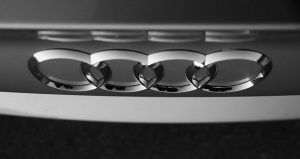Navigating PCP Claims for Wear and Tear Damage: A UK Motorist’s Guide
When managing a Personal Contract Purchase (PCP) in the UK, it's crucial to understand the term…….

When managing a Personal Contract Purchase (PCP) in the UK, it's crucial to understand the terms and conditions, especially concerning wear and tear. PCPs are popular due to their structured payments, with lower monthly costs compared to other financing options. As your PCP contract nears its end, it's important to assess the car's condition in light of the agreed standards to avoid additional charges. If you plan to return the vehicle under the terms of a PCP claim, ensure that the wear and tear is within what's considered reasonable for its age and mileage as per the finance company's guidelines. Should your vehicle have more wear and tear than allowed, you'll need to fix it at your own expense. A successful PCP claim in the UK for fair wear and tear can potentially reduce the final balloon payment by adjusting the Guaranteed Minimum Future Value (GMFV). To make a claim, follow the finance company's process, which includes providing photographic evidence, and consult your contract or contact your provider for detailed instructions. Remember to maintain a comprehensive service history and document all maintenance work to support your PCP claim, as this will be essential upon returning the vehicle. Keeping up with the manufacturer's warranty coverage and adhering to the servicing schedule can help manage routine maintenance and unexpected issues efficiently. In summary, understanding the intricacies of a PCP claim within the UK's context, maintaining accurate records, and communicating effectively with your finance provider are key to successfully navigating the end-of-contract process and avoiding any surprise financial obligations.
Navigating vehicle ownership often involves understanding the intricacies of PCP Claims in the UK. This article delves into the nuances of PCP claims for wear and tear damage, offering a comprehensive guide from the essentials of making a claim to managing them effectively. Whether you’re a car owner or considering leasing, this piece will equip you with the knowledge to navigate PCP claim processes and key considerations for vehicle maintenance, ensuring you make informed decisions and maintain your vehicle’s optimal condition.
- Understanding PCP Claims for Vehicle Wear and Tear in the UK
- The Process of Making a PCP Claim for Wear and Tear Damage
- Key Considerations When Submitting PCP Claims for Vehicle Maintenance
- Tips for Effective Management of PCP Claims for Vehicle Wear and Tear
Understanding PCP Claims for Vehicle Wear and Tear in the UK

When navigating the complexities of car finance in the UK, Personal Contract Purchase (PCP) agreements stand out as a popular option for both new and used vehicle purchases. Understanding PCP claims for vehicle wear and tear is crucial for those who opt for this financing method. PCP deals structure your payments based on an anticipated final value of the car at the end of the agreement term, with a guaranteed minimum future value. This structure allows drivers to benefit from potentially lower monthly repayments compared to other finance options.
However, at the end of the PCP contract, when opting to hand back the vehicle, it’s necessary to consider the condition of the car. PCP claims in the UK are designed to cover any excess wear and tear beyond what is considered reasonable for the car’s age and mileage at the end of the contract. Guidelines on acceptable wear and tear are typically provided by the finance company. It’s important to adhere to these guidelines to avoid additional charges. If the vehicle is returned in better condition than outlined in the agreement, you may be entitled to claim a share of the excess monies from the final settlement. Conversely, if there is more wear and tear than stipulated, you would be responsible for covering the costs associated with returning the car to an acceptable state. Understanding your responsibilities under a PCP agreement and the parameters of wear and tear can save drivers from unexpected expenses when the contract reaches its conclusion.
The Process of Making a PCP Claim for Wear and Tear Damage

When a vehicle under a Personal Contract Purchase (PCP) agreement sustains wear and tear damage, understanding the process for making a claim is crucial. Motorists with PCP agreements in the UK can claim for fair wear and tear through their finance company, provided the damage does not exceed what is considered reasonable for the car’s age, mileage, and usage. The first step in the claims process is to consult the vehicle’s user manual or the contract terms provided at the outset of the agreement, which typically outline what constitutes fair wear and tear. If the damage appears to fall within these guidelines, the vehicle owner should inform their finance company as soon as possible. This communication usually initiates via a phone call or an online claim form.
The finance company will then assess the claim, often requiring photographic evidence of the damage to support the submission. It’s important to document any damage thoroughly, capturing all angles and aspects of the issue. Once the finance company has reviewed the claim and supporting evidence, they will determine whether the damage qualifies as fair wear and tear. If approved, the finance company may settle the claim by reducing the Guaranteed Minimum Future Value (GMFV) or making a settlement payment at the end of the agreement, effectively lowering the final balloon payment. Throughout this process, it’s advisable to adhere strictly to the PCP terms and conditions, as failing to do so could affect the outcome of the claim. For specific guidance on the process, PCP claimants in the UK should refer to their contract or contact their finance provider directly.
Key Considerations When Submitting PCP Claims for Vehicle Maintenance

When navigating PCP claims for vehicle maintenance in the UK, it’s crucial to be well-versed in the terms and conditions set forth by your finance agreement. Understanding the limitations and coverage of your Personal Contract Purchase (PCP) plan is essential for ensuring that your claims are processed efficiently. Typically, PCP claims for wear and tear are acceptable if they are deemed normal use over the agreement’s duration. However, excessive damage or neglect will likely be rejected. It’s advisable to maintain a service history and document all maintenance work to support your claim. Upon termination of the contract, you may submit a claim for any excess mileage or fair wear and tear, as outlined in your PCP agreement. This documentation should include evidence of the vehicle’s condition at the start and end of the agreement, as well as all interim services and repairs. By thoroughly reviewing the PCP terms and adhering to the maintenance schedule, you can ensure a smoother claims process when the time comes to return your vehicle. Keep in mind that each finance provider may have specific criteria for what constitutes fair wear and tear under PCP claims, so it’s prudent to consult your agreement or contact your provider directly for clarification.
Tips for Effective Management of PCP Claims for Vehicle Wear and Tear

When managing PCP claims for vehicle wear and tear in the UK, it’s crucial to maintain thorough documentation and understand the terms and conditions of your Personal Contract Purchase (PCP) agreement. Early on, familiarise yourself with the warranty provided by the manufacturer or dealer, as this can cover a significant portion of routine maintenance and unexpected issues. Regular servicing as per the manufacturer’s guidelines is not only a condition of the PCP contract but also helps to identify potential problems before they lead to more substantial wear and tear.
Upon encountering an issue covered under your PCP agreement, act promptly. Contact your finance provider immediately to report the problem and follow their recommended process for claiming. Ensure that you keep all records, receipts, and correspondence related to the vehicle’s maintenance and repairs. This documentation will be essential when submitting your claim for wear and tear. Additionally, be mindful of the agreement’s mileage cap, as exceeding this limit can affect the value of your vehicle at the end of the contract and how much you might owe or receive back. By staying organised and proactive with maintenance, understanding your PCP terms, and communicating effectively with your finance provider, you can navigate the claims process successfully and maintain your vehicle in top condition throughout the life of the PCP agreement.
When navigating the intricacies of PCP (Personal Contract Purchase) claims for vehicle wear and tear in the UK, understanding the process and key considerations is paramount. This article has provided a comprehensive overview, from eligibility criteria to the step-by-step procedure for submitting a claim, along with practical tips for effective management of these claims. By following the guidelines outlined, vehicle owners can ensure they handle their PCP claim for wear and tear damage efficiently and effectively, minimising financial impact and maintaining their peace of mind on the road. For those looking to understand or make a PCP claim in the UK, this resource serves as an invaluable guide to protect your investment and manage any unforeseen vehicle maintenance needs.







